It was a group of just five members who participated in the March Nature Ramble on Monday, March 17.
It was a very pleasant morning to be in this section of the Anglesea Heath (corner of Forest Road and Great Ocean Road.
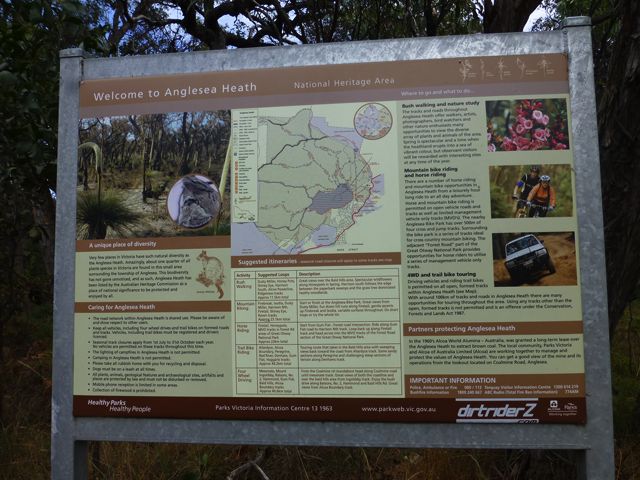
Anglesea Heath
We explored a small area as we walked down the track parallel to Great Ocean Road and then returned walking up an internal track. Despite the dry conditions that we had been experiencing, the site was looking exceedingly beautiful.
Ixodia Ixodia achillaeoides subsp. alata, that we had admired on Ixodia Track in February, was just a little past its best, but nevertheless it was still very spectacular covering large areas, with the white papery bracts of the flowers contrasting against the green vegetation.
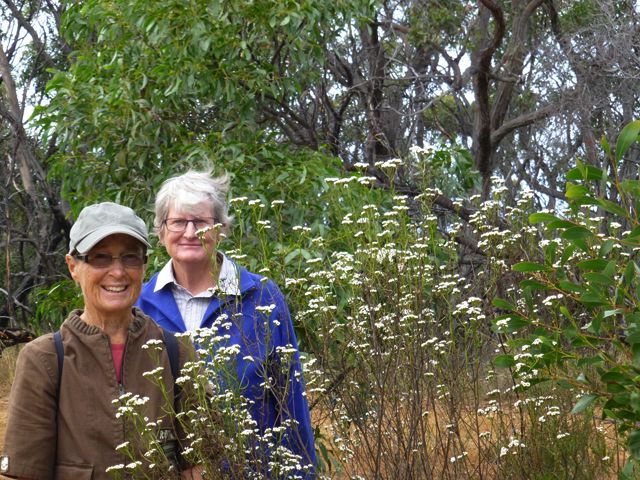
Eathorne & Roma framed by the Ixodia
On the other side of the track it was the Dusty Miller Spyridium parvifolium that was not going to be oudone by the Ixodia. It was not really in flower although a few flowers were present. The flowers are tiny, cream and five-petalled, appearing mainly in winter and spring. The flowers are surrounded by greyish-white floral leaves that caught our attention in amongst the eucalypts. Looking at them closely, they appeared to be exceedingly large.
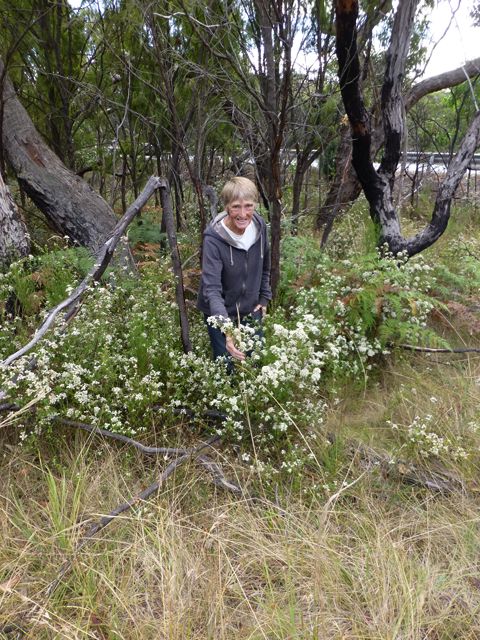
Margaret admires the Dusty Miller

A few flowers surrounded by large floral leaves
We identified a number of eucalypts :- Messmate Eucalyptus obliqua, Brown Stringybark E. baxteri, Scent-bark E. aromaphloia, and our own special Anglesea Grey-gum E. litoralis. The buds of this species were just forming on their distinctive broadly flattened, strap-like stalks up to 2.5cm long. We had difficulty finding full flower buds that appear in groups of seven. Many had lost one or two of their buds.
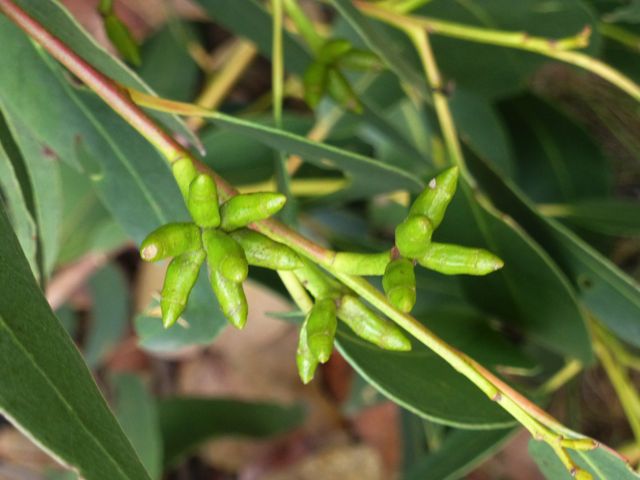
Common Brown Butterflies were fluttering about and we were delighted to see a Scarlet Robin perch on a tree high above our heads.
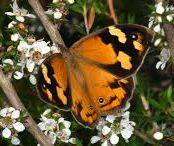
Common Brown Butterfly
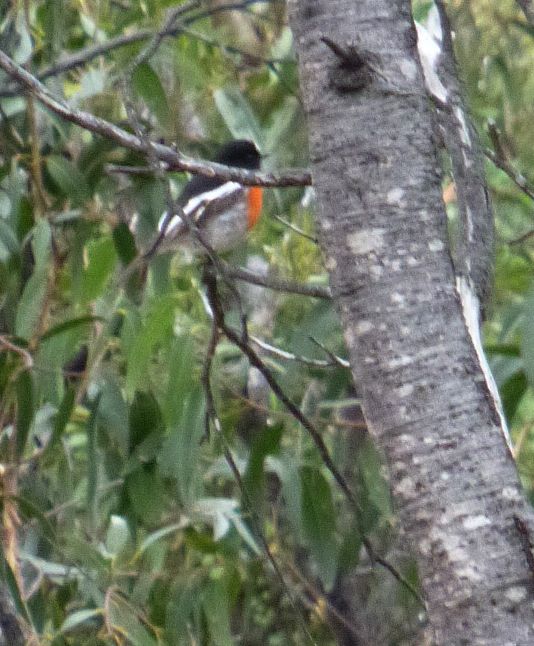
The area was remarkably free from environmental weeds but we did remove a few as we walked along – mainly Coast/Sallow Wattle and a few Boneseed bushes.
One large Bluebell Creeper was soon removed and left to die on the side of the track.
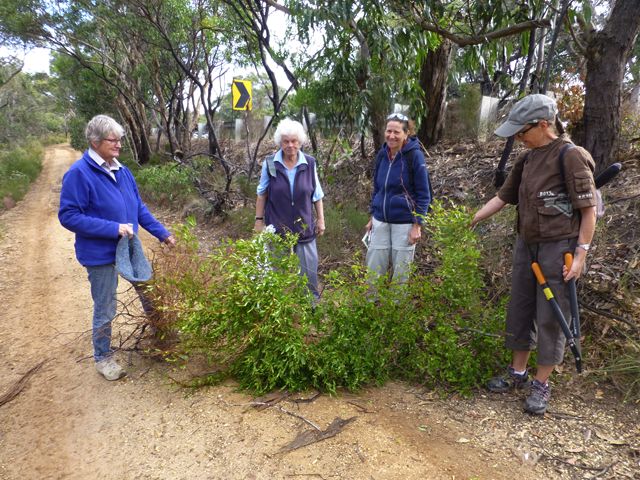
Bluebell Creeper
We stopped to admire the insect markings on the trunk of one of the trees – it almost looked like aboriginal art.
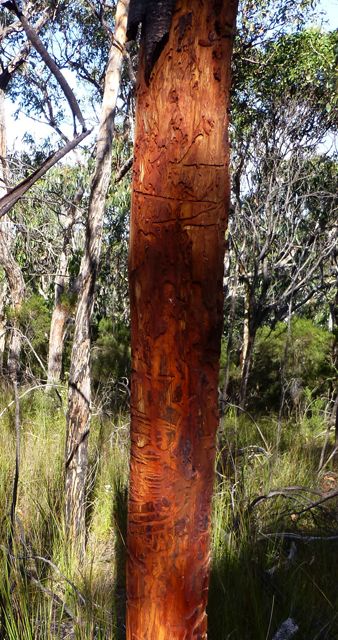
Insect markings on tree trunk
We all agreed that the area was rich in biodiversity. We listed approximately 50 different species. It is the only area in our district, that we are aware of, where the Fringed Everlasting Chrysocephalum baxteri grows. We promised ourselves to return in late spring when this beautiful species and many other of our flowers should be in bloom.
Margaret MacDonald